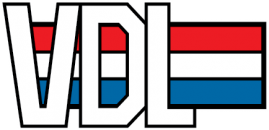Injection moulding
Injection moulding is the technique for making complex plastic products with a high-quality appearance in large series. The production by means of robots is extremely efficient and, since there is barely any or no finishing required, the product costs are low. In addition, other product components can already be included in the mould, so that they are integrated with the end product. VDL Wientjes Emmen concentrates on injection moulding of technical and special plastics.
Thermoplast raw materials
Injection moulding involves working with thermoplastic raw materials, which are supplied as granulate, with or without glass fibres or other supplements integrated. After being heated, these granulates are injected under high pressure in the mould. The surfaces are exactly the same as the mould surface: smooth or textured, with logos, images or texts applied. Nearly the whole range of thermoplastics can be processed, like PP, PE. LLDPE, LDPE, HDPE, PS but also high tech plastics with high processing temperatures (up to 400 ºC) like PEI, PES, Ultem, PARA.
Machinery
VDL Wientjes Emmen has a very well-equipped injection moulding factory with a large capacity, which houses machines with a clamping force varying from 500 kn to 20.000 kN maximum. The injection moulding machiness are capable to use a hotrunner system with hydraulic or pneumatic pin valve and are therefore suitable for cascade injection moulding.. Every injection moulding machine is equipped with linear robots with one extra axe. For complex products, robot claws are made in house specifically for the product. For production with high standard technical plastics, the moulds are heated with thermo oil. The up-to-date injection moulding machines monitor the complete mould proces. The machines are equipped with robots with 4 linear axes or 6 buckle axes.
Gas injection
At VDL Wientjes Emmen is the possibility to apply gas injection. By injecting gasses after filling the mould, a hollow product is created. As a result, less material is needed and the cycle time is reduced. Strength and surface quality are fully retained and even thick-walled components do not require strengthening ribs.
2 components
VDL Wientjes Emmen is also able to use two components in injection moulding. A product consistent of two different materials is formed in one injection cycle. For example, a flexible sealer can be integrated or a product can be produced in two colours.
In Mould Labelling
For in mould labelling printed foils are inserted in the mould. The foils are held in the mould through a static charge. By injecting plastic material against the foil it is bonded into one product. The products do not need extra printing.
Our R&D department would like to advise you on which machine we can manufacture your product.
